Chapter 10 ggplot2_cheatsheet
Xiaorui Zhang
10.1 Some Advanced Techs from ggplot2
10.2 Dataset
library(ggplot2)
library(dplyr)
## [, 1] mpg Miles/(US) gallon
## [, 2] cyl Number of cylinders
## [, 3] disp Displacement (cu.in.)
## [, 4] hp Gross horsepower
## [, 5] drat Rear axle ratio
## [, 6] wt Weight (1000 lbs)
## [, 7] qsec 1/4 mile time
## [, 8] vs Engine (0 = V-shaped, 1 = straight)
## [, 9] am Transmission (0 = automatic, 1 = manual)
## [,10] gear Number of forward gears
## [,11] carb Number of carburetors
head(mtcars)## mpg cyl disp hp drat wt qsec vs am gear carb
## Mazda RX4 21.0 6 160 110 3.90 2.620 16.46 0 1 4 4
## Mazda RX4 Wag 21.0 6 160 110 3.90 2.875 17.02 0 1 4 4
## Datsun 710 22.8 4 108 93 3.85 2.320 18.61 1 1 4 1
## Hornet 4 Drive 21.4 6 258 110 3.08 3.215 19.44 1 0 3 1
## Hornet Sportabout 18.7 8 360 175 3.15 3.440 17.02 0 0 3 2
## Valiant 18.1 6 225 105 2.76 3.460 20.22 1 0 3 110.3 Facet
10.4 Facet layer basics
ggplot(mtcars, aes(wt, mpg)) +
geom_point() +
## Facet rows by am and columns by cyl
facet_grid(rows = vars(am),cols = vars(cyl))
10.5 Many variables
mtcars$fcyl_fam <- interaction(mtcars$cyl,mtcars$am,sep = ":")
## Update the plot
ggplot(mtcars, aes(x = wt, y = mpg, color = fcyl_fam, size = disp)) +
geom_point() +
scale_color_brewer(palette = "Paired") +
## Grid facet on gear and vs
facet_grid(rows = vars(gear), cols = vars(vs))
10.6 Formula notation
ggplot(mtcars, aes(wt, mpg)) +
geom_point() +
## Facet rows by am using formula notation
facet_grid(am ~ .)
ggplot(mtcars, aes(wt, mpg)) +
geom_point() +
## Facet columns by cyl using formula notation
facet_grid(. ~ cyl)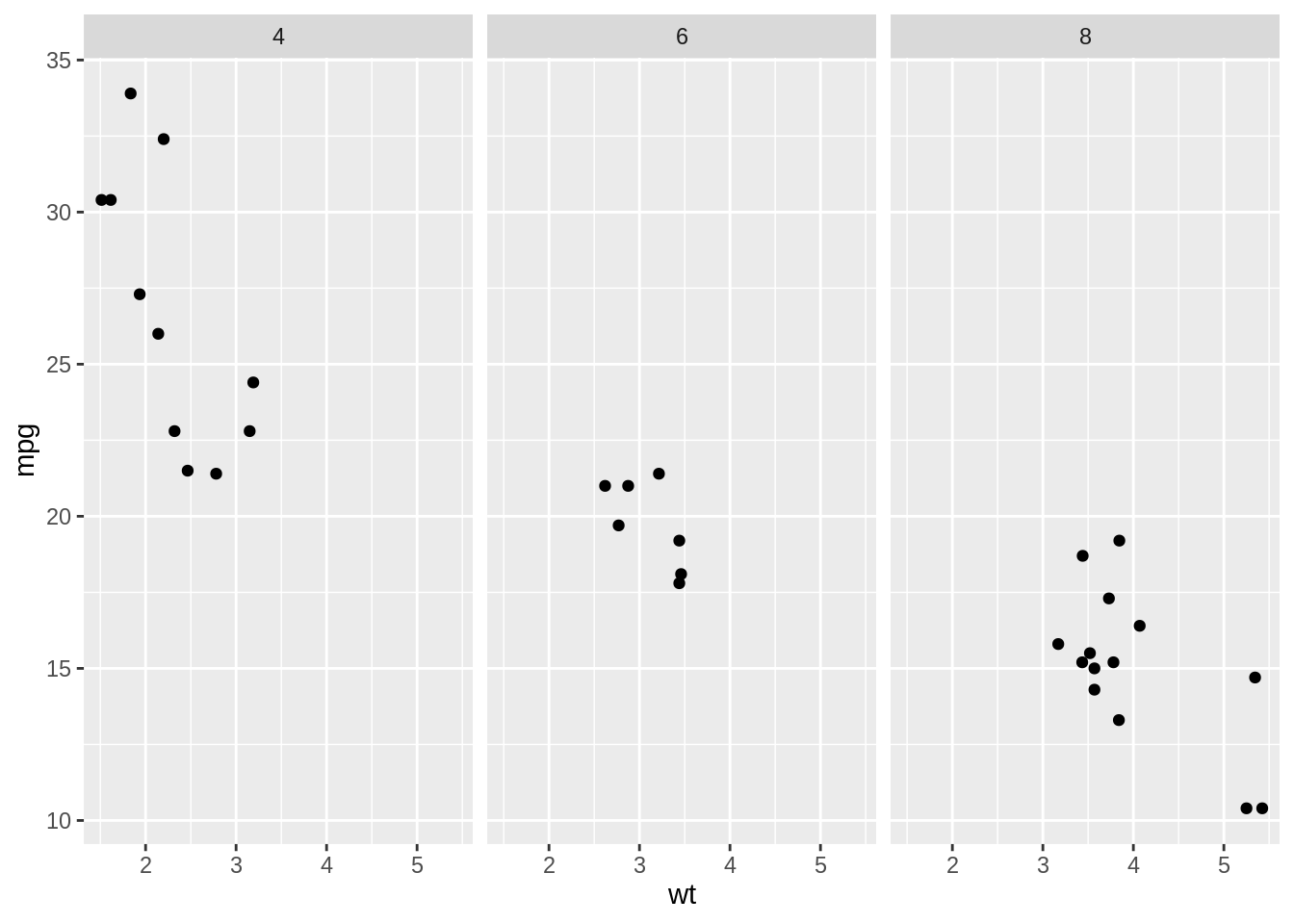
ggplot(mtcars, aes(wt, mpg)) +
geom_point() +
## Facet rows by am and columns by cyl using formula notation
facet_grid(am ~ cyl)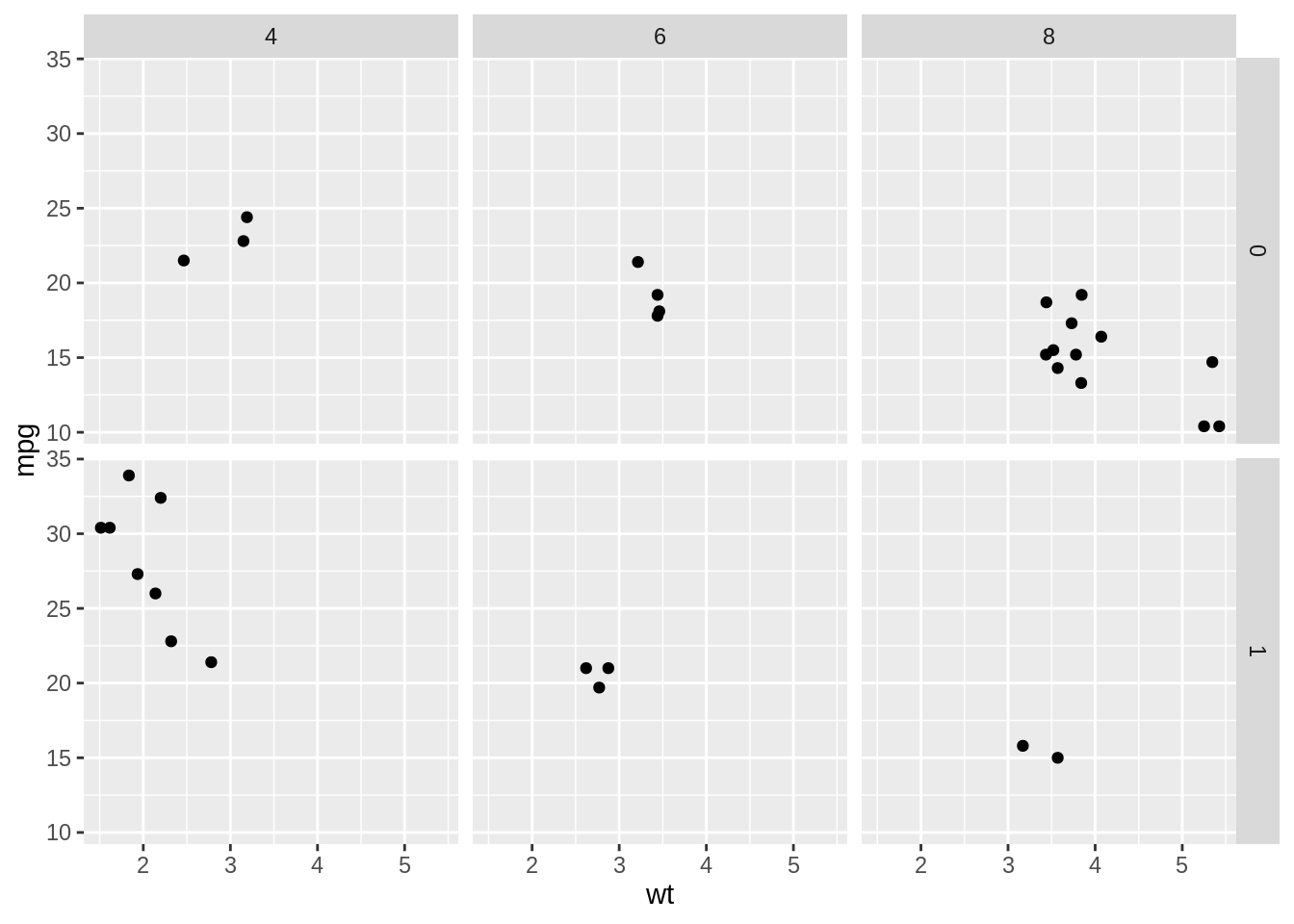
10.7 Labeling facets
## Plot wt by mpg
ggplot(mtcars, aes(wt, mpg)) +
geom_point() +
## Displaying both the values and the variables
facet_grid(cols = vars(cyl), labeller = label_both)
## Plot wt by mpg
ggplot(mtcars, aes(wt, mpg)) +
geom_point() +
## Label context
facet_grid(cols = vars(cyl), labeller = label_context)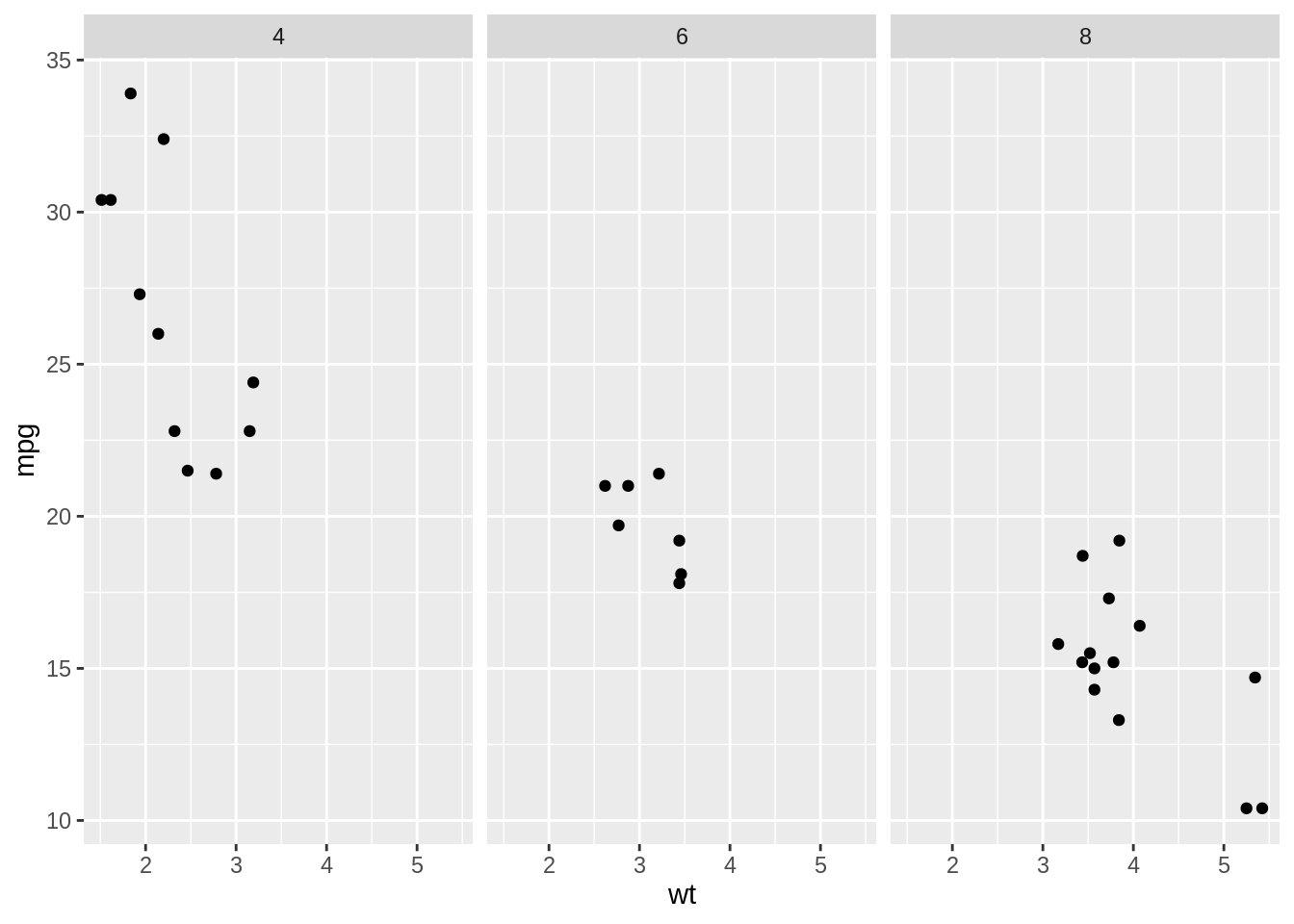
10.8 Coordinates
10.9 Expand and clip
## Expand sets a buffer margin around the plot, so data and axes don't overlap.
## Setting expand to 0 draws the axes to the limits of the data.
## Clip decides whether plot elements that would lie outside the plot panel
## are displayed or ignored ("clipped").
ggplot(mtcars, aes(wt, mpg)) +
geom_point(size = 2) +
## Add Cartesian coordinates with zero expansion
coord_cartesian(expand = 0) +
theme_classic()
ggplot(mtcars, aes(wt, mpg)) +
geom_point(size = 2) +
## Turn clipping off
coord_cartesian(expand = 0, clip = "off") +
theme_classic() +
## Remove axis lines
theme(axis.line = element_blank())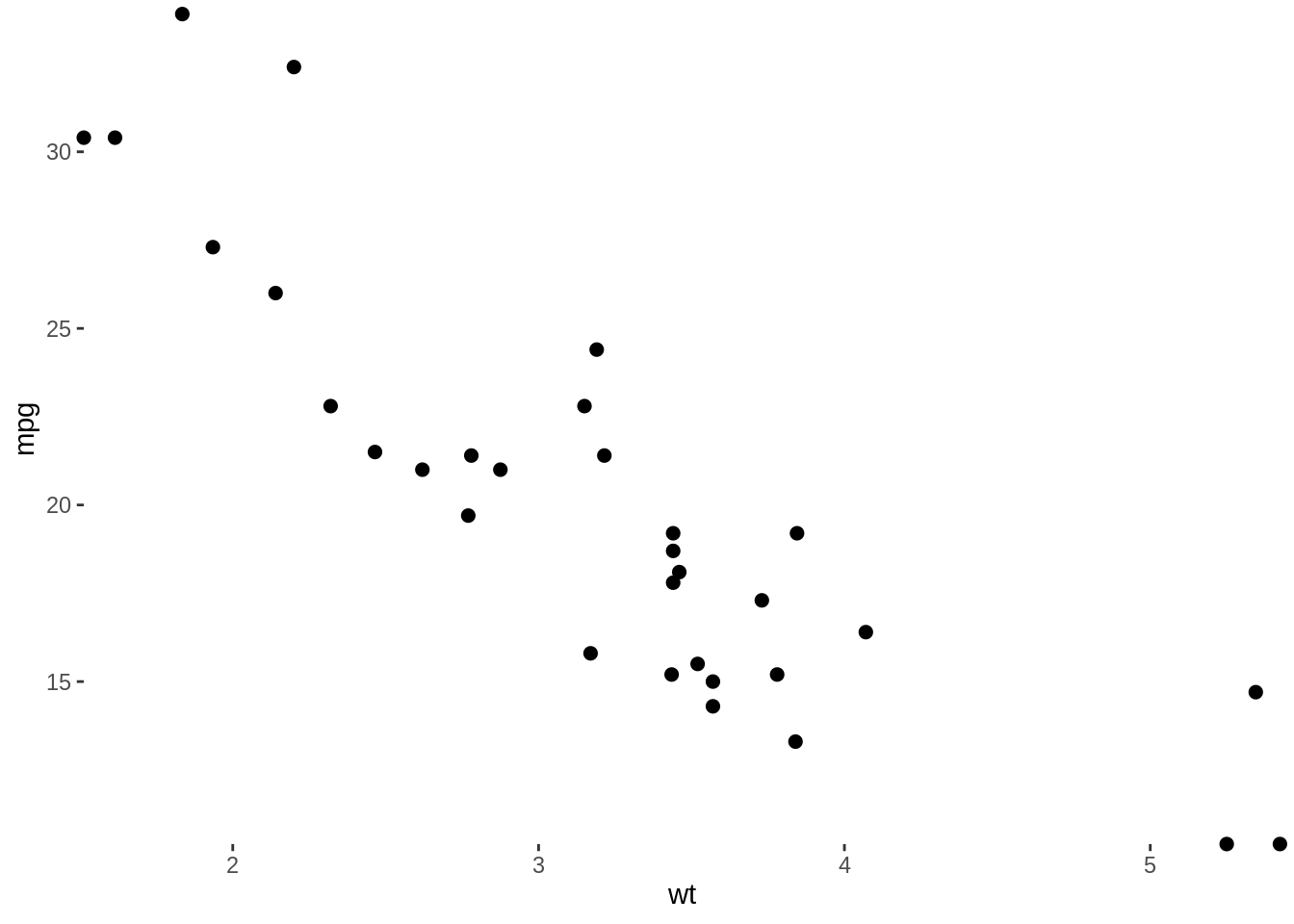
10.10 Flipping axes
## Plot fcyl bars, filled by fam
ggplot(mtcars, aes(as.factor(cyl), fill = as.factor(am))) +
## Place bars side by side
geom_bar(position = "dodge")
ggplot(mtcars, aes(as.factor(cyl), fill = as.factor(am))) +
geom_bar(position = "dodge") +
## Flip the x and y coordinates
coord_flip()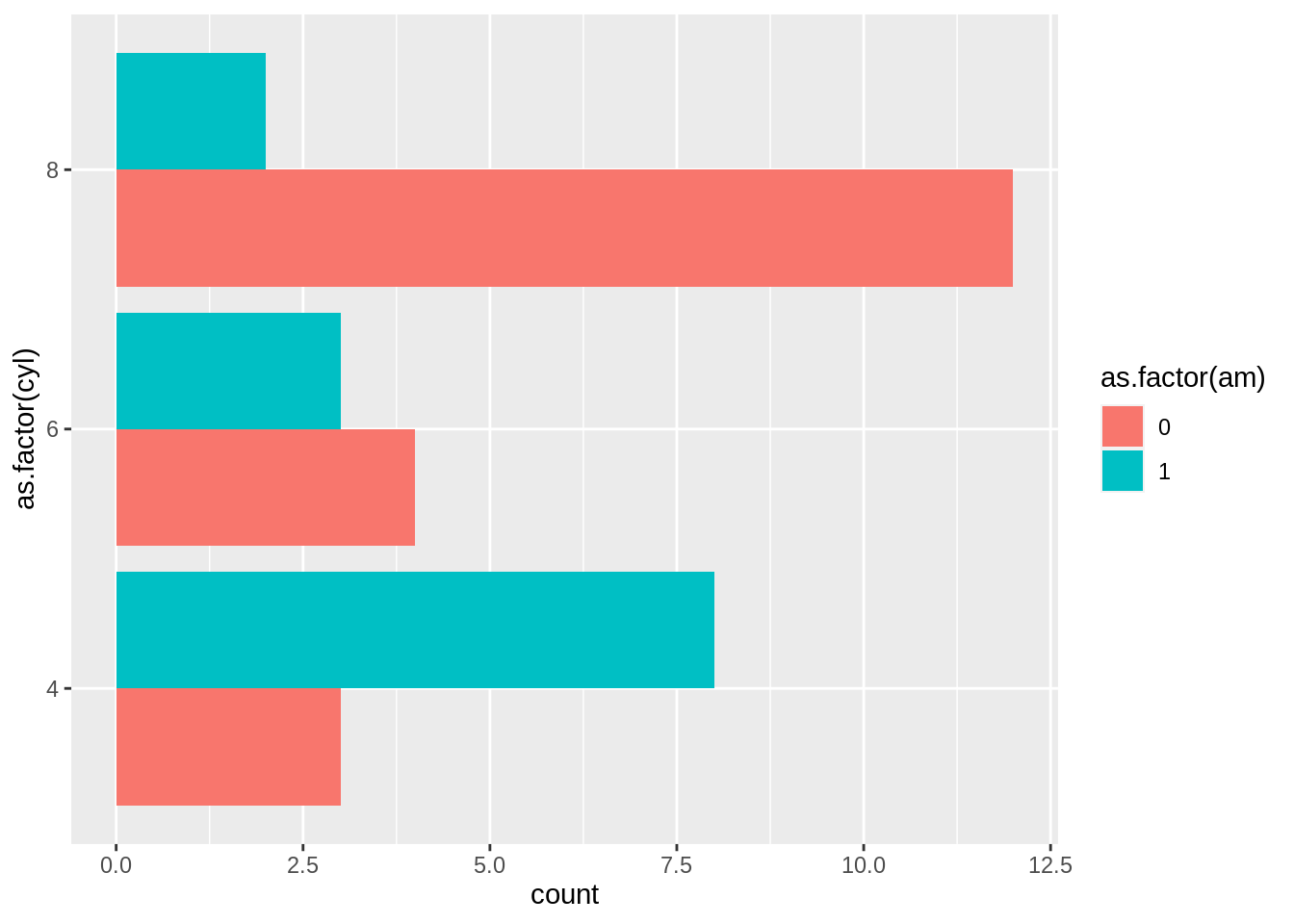
ggplot(mtcars, aes(as.factor(cyl), fill = as.factor(am))) +
## Set a dodge width of 0.5 for partially overlapping bars
geom_bar(position = position_dodge(width = 0.5)) +
coord_flip()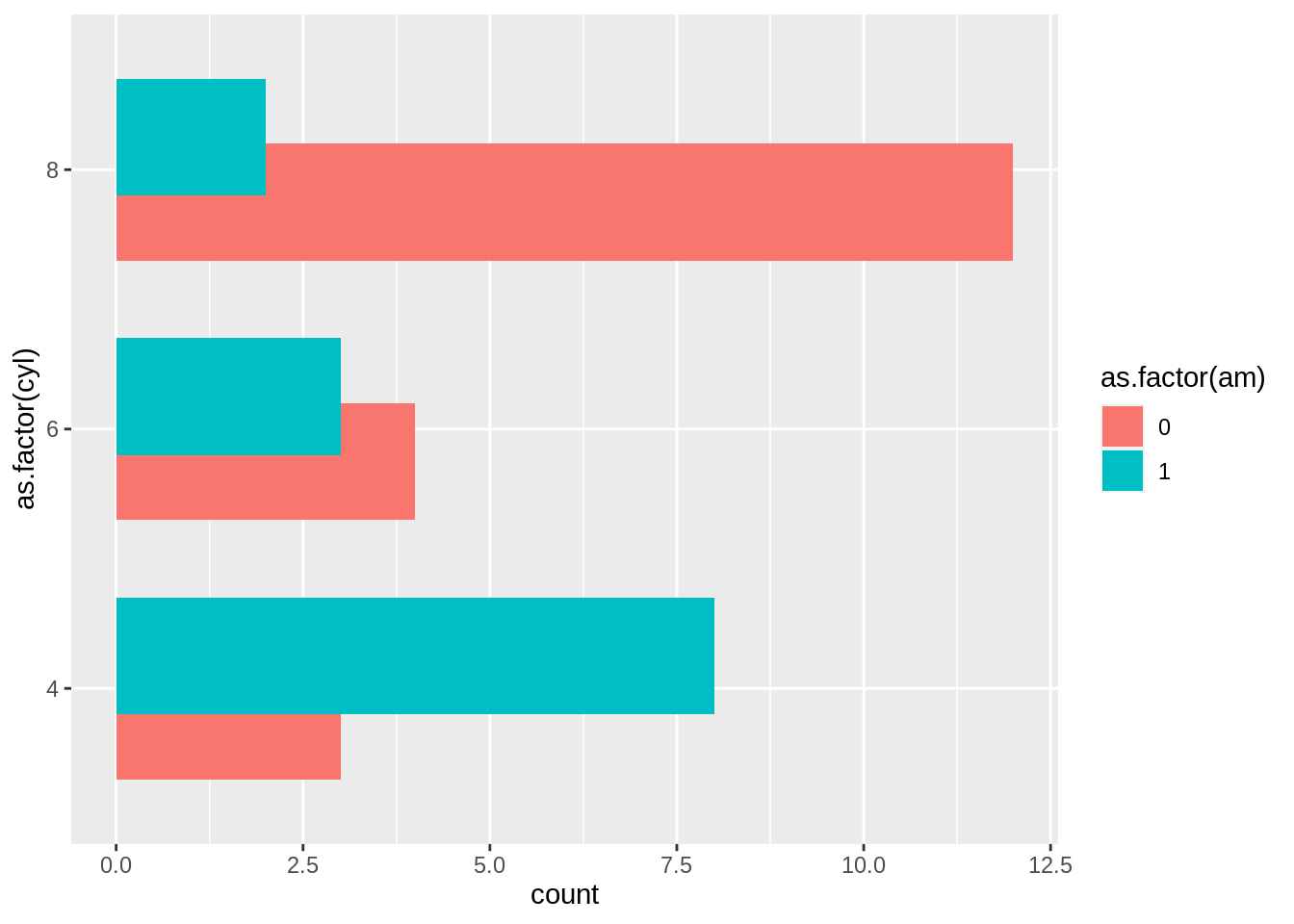
10.11 Pie charts
## Run the code, view the plot, then update it
ggplot(mtcars, aes(x = 1, fill = as.factor(cyl))) +
geom_bar()+
## Add a polar coordinate system
coord_polar(theta = "y")
ggplot(mtcars, aes(x = 1, fill = as.factor(cyl))) +
## Reduce the bar width to 0.1
geom_bar(width = 0.1) +
coord_polar(theta = "y") +
## Add a continuous x scale from 0.5 to 1.5
scale_x_continuous(limits = c(0.5,1.5))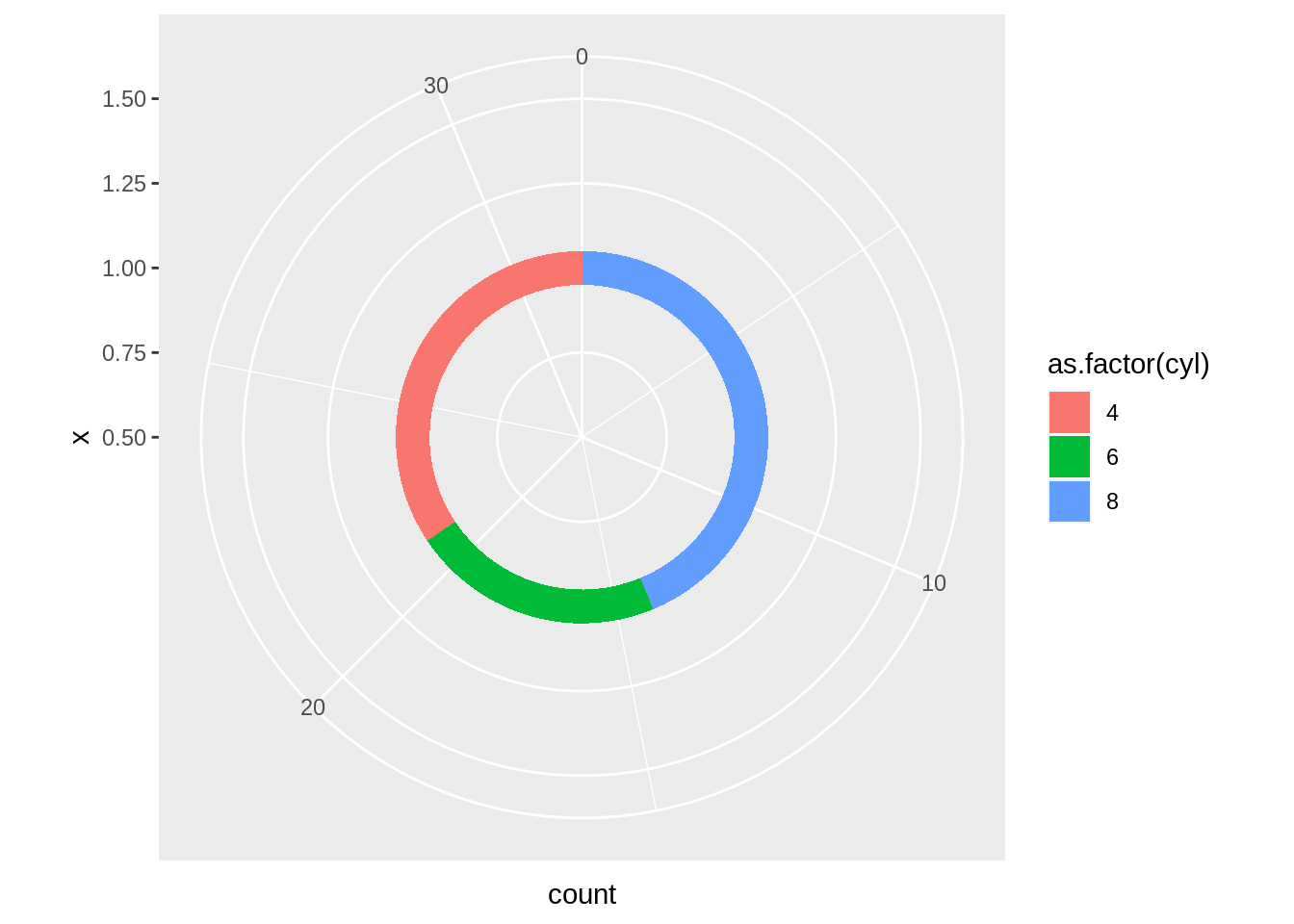
10.12 Conclusion
This is only a little part of ggplot2, and then in my additional resources, compared with ggplot2, everyone can learn the visualization tools from Python if needed.